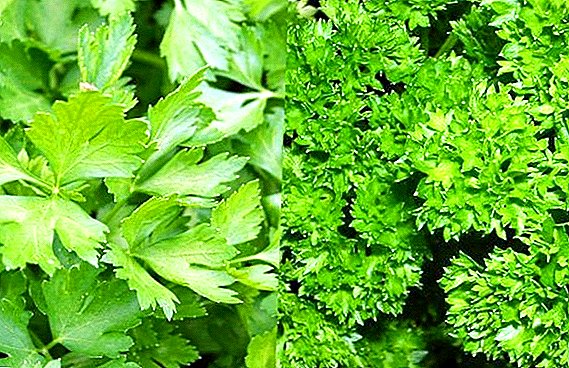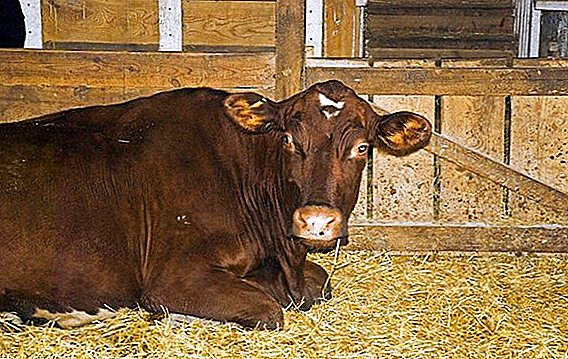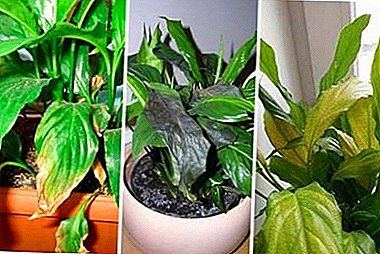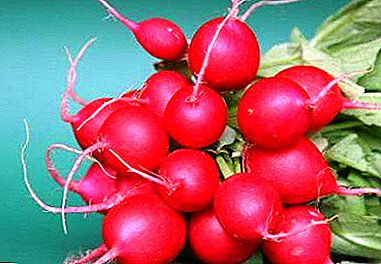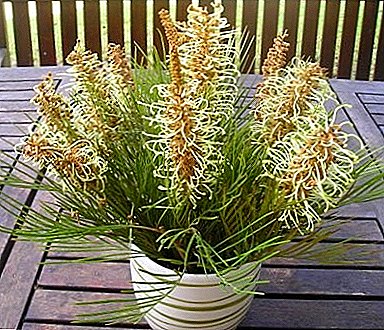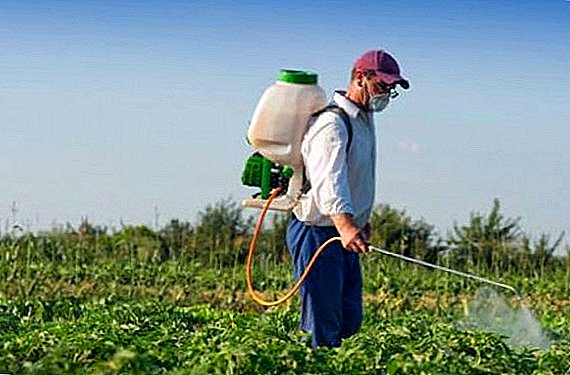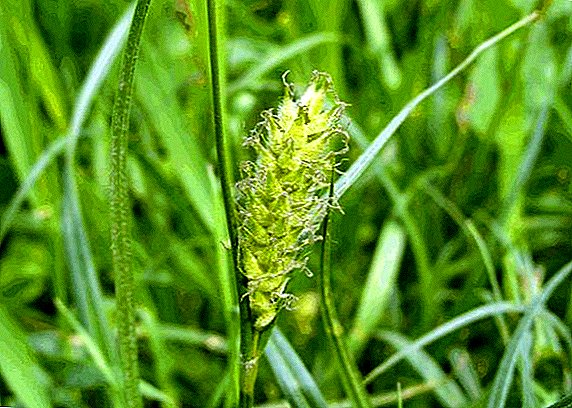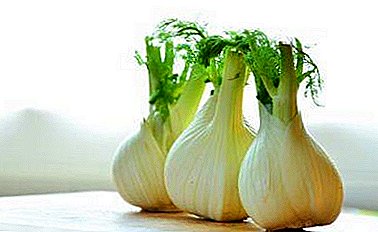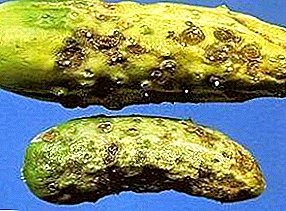
Many gardeners, especially beginners, believe that growing cucumbers in a greenhouse will allow protect plants from many diseases, and it will protect against pests much better than in open ground conditions.
This is not entirely true. Let's try to talk about what dangers lie in your planting in the greenhouse, what diseases and pests can threaten them, ways of protection against pests, ways of treatment and prevention of cucumber diseases.
Diseases: description and control measures
Occurring diseases in the greenhouse, when growing cucumbers, are not limited to one name. Tell about most common. These include:
- white and gray rot;
- root rot;
- dew: false and mealy;
- brown spot (olive);
- leaf mold (black).
Let us consider the disease of cucumbers in the greenhouse and their treatment with illustrative examples in the photo.
White rot
Causative agent plant diseases is a fungus. A sign of defeat is a fluffy patina of white in all parts of the plant, from roots and lashes, to leaves and fruits. Secreted by fungus substances not only destroy the plants, but also stored in the ground very long time.
Over time, the diseased plant tissues rot completely. To fight this disease is difficult, but quite possible. The control measures are the removal of all remnants of the affected plant, old fruits and leaves. Full soil replacement is desirable. at the site of planting cucumbers.


Useful information about white rot on cucumbers in the video:
Gray rot
A sign of defeat gray rot is the appearance of gray, slippery spots on the fruit. Then the infection spreads throughout the plant. Fruits, ovaries, flowers are most affected.. Countermeasures are the same with those with white rot.
Only the need for pollination in the initial stages of the disease with a mixture of copper sulfate (one teaspoon) with a glass of wood ash is added. Spraying will help, with strict compliance with the instructions, the drug type "Barrier". The drug is not dangerous for people and animals.
Important: even in the absence of fungal infections, a change of soil in the greenhouse every two years is recommended. Replace the surface layer of soil (about 20 centimeters) with a mixture of earth, peat, sand. Important to ensure good drainage and soil fertility.

Root rot
Very often, this disease manifests itself when planting seedlings of cucumbers in the greenhouse. Occurs due to deep landing, may occur when conducting additional hilling plant stalks. The disease develops very quickly, especially if the seedlings were planted on the soil where cucumbers used to grow. To provoke a disease can watering with cold water or a sharp decrease in the temperature of the soil.
Disease indicator there are spots on the leaves, which are especially visible after a prolonged bad weather. A sign is also the cracking and well-marked yellow color of the stems. Cracking and discoloration clearly seen, if you otgresti land from the stem in the holes.
Damaged tissue can be clearly seen when raking the ground from the stem of the plant. Places of damage can be powdered with crushed chalk or coal, wood ash. After this is required dry spots. During the next watering, do not allow the stalks to fall asleep with earth, water only the soil in the hole, preventing moisture from entering the affected stalks.
Completely dead stems are cleaned with a clod of earth. Pour the remaining well with an aqueous solution of copper sulphate, prepared in the following proportion: for 5 liters of water, 20 grams of copper sulphate. Dead plant burn.

Useful information about root rot on cucumbers in the video:
Mealy dew
Affected Cucumber Stalks covered with white bloom. The lesion is caused by a fungus. The first leaves are affected. Further, the disease spreads to the stems of plants. The next stage of the disease is drying and dying off of leaves and stems. An excellent preparation for the fight is "Topaz". The drug is available in ampoules, the contents of which is dissolved in eight liters of water.
The resulting solution is sprayed affected plants. Treatment with a solution can be carried out not only in the manifestation of signs of the disease, but also for the purpose of prevention.
Is possible treatment with the drug "Barrier"which is very effective in showing signs of disease.
Spraying solution is prepared at the rate of - three caps of the drug dissolve in a liter of water.
Attention! For the prevention of diseases, especially when large areas of treatment use biologics. Such as Alirin-B, Gamair, Gliokladin, Trihotsin. Remember to strictly follow the instructions for use.


Useful information powdery mildew on cucumbers in the video:
Downy mildew
The causative agent of downy mildew remains in the ground for a long time, can manifest itself in 5-7 years after the first illness. A sign of infection is the appearance of burn-like spots on the leaves. In the future, the leaves become brown. Drying of the affected leaves very fast, no longer than 2-3 days.
To provoke an infection can watering with cold water or a sharp difference in day and night temperatures, high humidity in the greenhouse at night. Struggle measures serves to stop watering and making dressings. Ventilate the greenhouse to reduce humidity.


Useful information of false flour mildew on cucumbers in the video:
Spot spot brown (olive)
Most often defeat manifested on the fruits of plants. Signs are the appearance of defects of brown color, from which is the flow of fluid. If no measures are taken to protect against the causative agent, all plants in a greenhouse may die within a week.
High humidity, drafts, excessive watering, and strong temperature differences during the day can provoke infection. To combat the disease night drafts should be avoided, for 5-7 days, stop watering, in the daytime, the warm time of the day to prevent the appearance of condensation, to air the greenhouse.


Leaf Mold (Black)
Defeat of plants causes funguslocated on the inner surface of the coating and in the soil of the greenhouse. The first most often affected leaves. Further, the disease spreads to all parts of the plant that are above ground level.
Spots appear on the leaves, gradually merging into one. Affected leaves dry out, subsequently covered with black bloomvery similar to the web. The fight measures are disinfection of the greenhouse inside, replacement of soil on cucumber ridges, seed dressing or the use of disease resistant varieties.
Cucumber pests
The most common pests of cucumbers in greenhouses are melon aphids, as well as spider mites.
Gourd Aphid
Shrinking and twisting the leaves Cucumber most often say about the defeat of melon aphids. On the leaves appear yellow spots, the sheet is folded. When viewed on the bottom of the sheet you will see aphid larvae of various colors. Having chosen the plant, aphid sucking juicesby slowing its growth and development.
The development of numbers is very fast and the aphid spreads over all planted plants. If you find an aphid on cucumbers in a greenhouse, the control measures are the following - in order to protect planting, it is advised to use an infusion of onion peel that will destroy the aphid in your greenhouse.
For protection pest control when large areas are needed use insecticides produced by industry.
Spider mite
Defeat of spider mite Leaves and stalks dry out.and subsequently the complete destruction of the plant. Determination of mite damage can be on the web on the leaves and stalks of cucumbers. When spider mite is detected fast processing required planting in the greenhouse. Spider mite on cucumbers in the greenhouse, without the measures taken to destroy it, can lead to the loss of all planted cucumbers.
The removal of completely damaged plants is most effective, with their subsequent burning. If a single plant is damaged, it is necessary to cover it with a film or cloth by placing inside a container of turpentine.
 Instead of turpentine you can put chopped garlic next to it. Smell will destroy the aphid colony on the plant. Processing must be carried out repeatedly, maintaining a break of 2-3 days.
Instead of turpentine you can put chopped garlic next to it. Smell will destroy the aphid colony on the plant. Processing must be carried out repeatedly, maintaining a break of 2-3 days.
Timely damage to the hives in your greenhouse with fungus or pests, with timely processing will help save the plants.
And saving planting, you will not be left without a crop of cucumbers.


